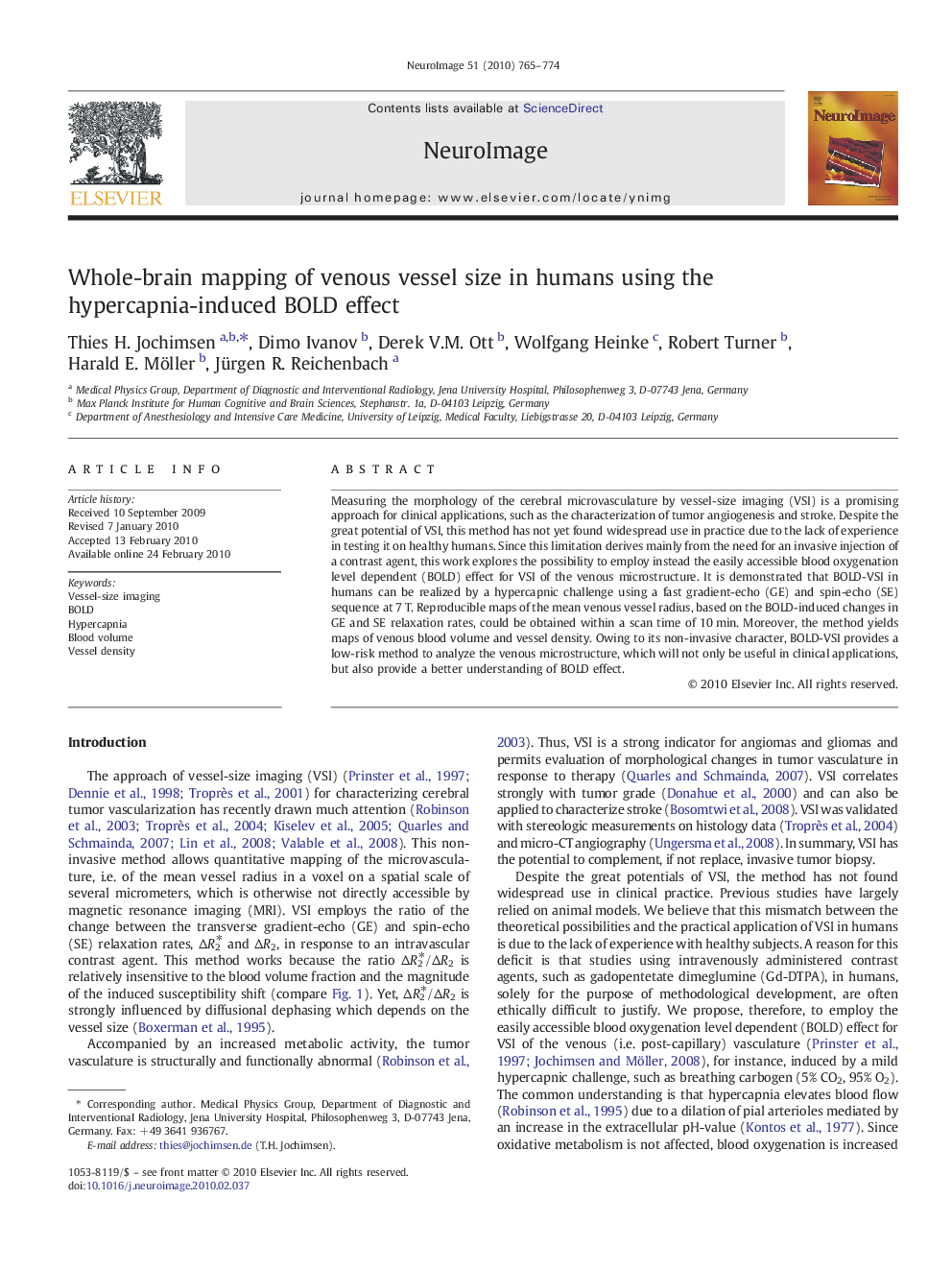| Article ID | Journal | Published Year | Pages | File Type |
|---|---|---|---|---|
| 6035757 | NeuroImage | 2010 | 10 Pages |
Measuring the morphology of the cerebral microvasculature by vessel-size imaging (VSI) is a promising approach for clinical applications, such as the characterization of tumor angiogenesis and stroke. Despite the great potential of VSI, this method has not yet found widespread use in practice due to the lack of experience in testing it on healthy humans. Since this limitation derives mainly from the need for an invasive injection of a contrast agent, this work explores the possibility to employ instead the easily accessible blood oxygenation level dependent (BOLD) effect for VSI of the venous microstructure. It is demonstrated that BOLD-VSI in humans can be realized by a hypercapnic challenge using a fast gradient-echo (GE) and spin-echo (SE) sequence at 7Â T. Reproducible maps of the mean venous vessel radius, based on the BOLD-induced changes in GE and SE relaxation rates, could be obtained within a scan time of 10Â min. Moreover, the method yields maps of venous blood volume and vessel density. Owing to its non-invasive character, BOLD-VSI provides a low-risk method to analyze the venous microstructure, which will not only be useful in clinical applications, but also provide a better understanding of BOLD effect.
